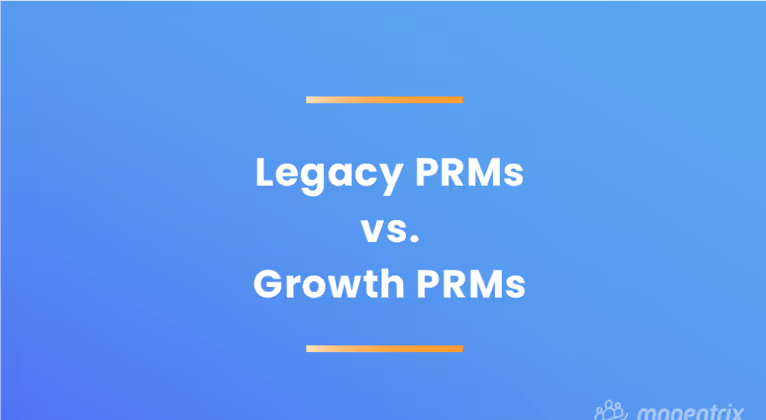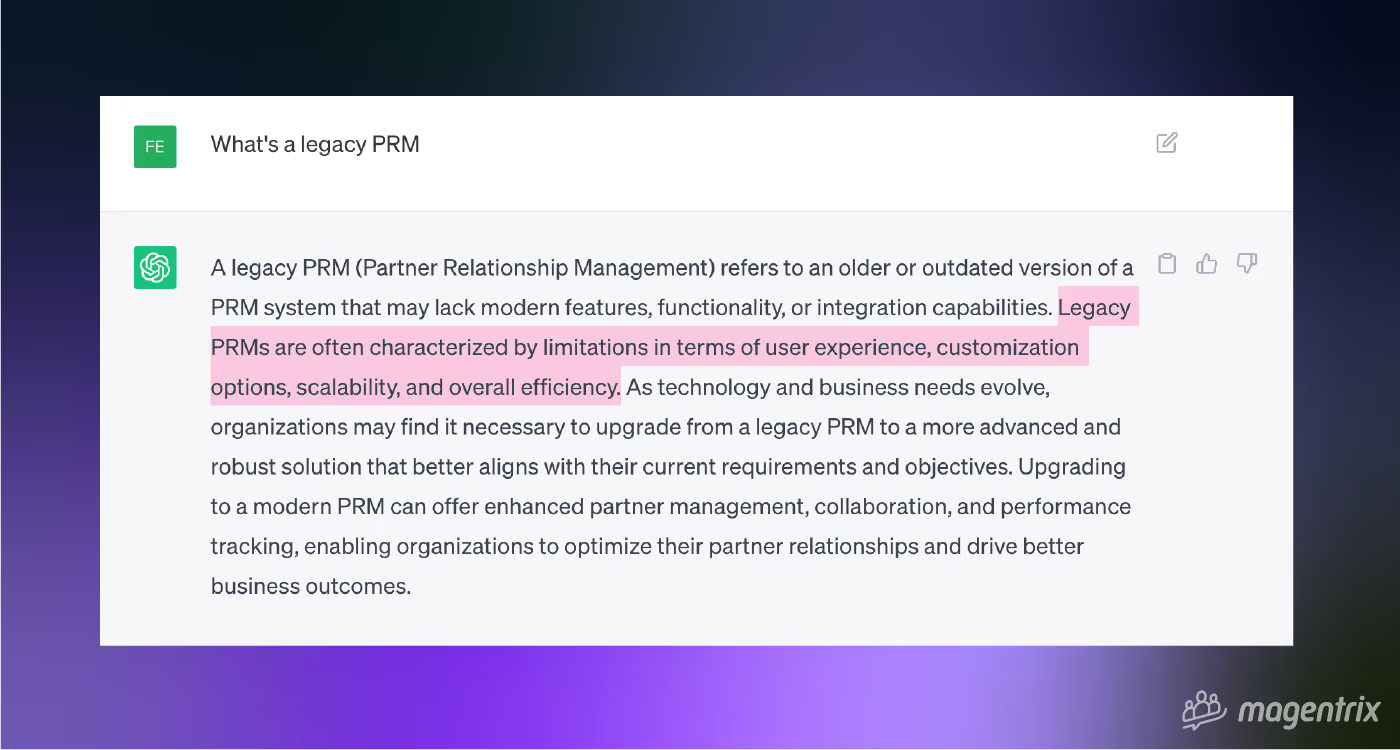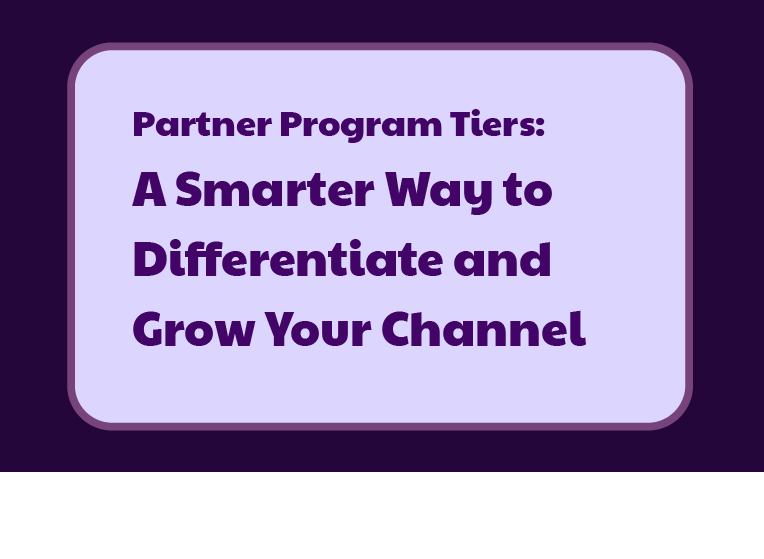- Legacy PRMs have a tough time keeping up with your partner program growth
- What's a legacy PRM?
- Magentrix: One of the only growth PRMs
- What can you do with a growth PRM vs. a legacy PRM?
- Who is considered a legacy PRM? Who's a growth PRM?
- When is the right time for a growth PRM?
- Conclusion: Modern PRMs aka Growth PRMs future-proof your partner program's tech needs
- Questions about legacy or growth PRMs?
Scaling Partner Programs with Legacy PRMs vs. Growth PRMs
What's a legacy PRM? We asked ChatGPT: A legacy PRM (Partner Relationship Management) refers to an older or outdated version of a PRM system that may lack modern features

Table of Contents 📋
August 8, 2023
Partner ManagementTable of Contents 📋
Introduction
When growing a partner program, consider choosing a PRM that grows with your partner ecosystem's needs.
The PRM types we'll review are:
- Legacy PRMs
- Modern (growth-enabling PRMs)
Some things to keep in mind while assessing which type of PRM to use are:
- Look for scalability to accommodate increasing partner numbers and activities
- Customizability is essential to tailor the platform to your unique requirements
- Supports multiple different partner types contained within the ecosystem, with targeted partner experiences based on the interest of the organization.
- For example strategic partnerships and technology partnerships are not transactional and don't need deal registration or referral links, however, a referral partner and a co-sell partner will have different KPIs they will want to track, in addition to potentially having different needs when it comes to marketing content and training.
- Enhancing partner experience through seamless and personalized interactions is key to partner engagement and sustained growth
- AI-capabilities can transform your existing partner processes and eliminate extra work for your partners
- An intuitive interface facilitates partner onboarding and engagement
- Automation streamlines processes as your program expands, reducing manual work
- Integration capabilities ensure smooth data flow with existing systems, boosting efficiency
- Global reach supports diverse partner locations and languages
- Robust reporting helps track performance metrics for informed decision-making
- Security is paramount to protect sensitive partner data as the program scales
- Future-proofing ensures the PRM can adapt to evolving business needs
- Cost-efficiency becomes more important as the program grows, so assess pricing models
- Create channels for partner feedback to continuously improve the program
- Make vendor support a top priority to facilitate a smoother scaling process
Many legacy-style PRMs in the market make big promises but fall short on delivering the expected results.
This is often due to their one-size-fits-all approach in building their software model.
For a long time, fixed PRM software models were acceptable for a lot of companies' requirements.
But nowadays, with the rise of partnerships as a prevalent go-to-market strategy and the increasing demands of extensive partner ecosystems, traditional PRM solutions are no longer sufficient to meet all the partnerships needs of modern businesses.
In today's landscape, legacy PRMs may promise a lot to prospects but often fall short on delivering substantial results.
We asked ChatGPT.
The answer was this:

"A legacy PRM (Partner Relationship Management) refers to an older or outdated version of a PRM system that may lack modern features, functionality, or integration capabilities.
Legacy PRMs are often characterized by limitations in terms of user experience, customization options, scalability, and overall efficiency.
As technology and business needs evolve, organizations may find it necessary to upgrade from a legacy PRM to a more advanced and robust solution that better aligns with their current requirements and objectives.
Upgrading to a modern PRM can offer enhanced partner management, collaboration, and performance tracking, enabling organizations to optimize their partner relationships and drive better business outcomes."
According to ChatGPT, almost every PRM out there fits the description of a legacy PRM.
Magentrix and Salesforce are two of the only PRMs that can be classified as modern PRMs, or what we call growth-enabling PRMs (and growth PRMs for short).
Now, the only question is: would you still want to use a legacy PRM?
Or is it better to use a modern, growth-enabling PRM, such as one that's built as a platform as a service (PaaS), that allows for the scalability, customization and extensibility you'll need as your business' needs grow and as expand your operations?
It doesn't make any sense to use a legacy PRM that will only limit what your business can accomplish.
A legacy PRM will have you spending time on mundane, laborious tasks while you could be saving that time with a PaaS PRM.
You could be using that time on actually giving your partners what they need to help meet your mutual goals.
Here are some things you can achieve with a modern, growth-enabling PRM that are not possible with a legacy PRM.
Let's start with the line we got from ChatGPT,
"Legacy PRMs are often characterized by limitations in terms of user experience, customization options, scalability, and overall efficiency."
This hits on the points of:
- UX (which can translate to PX – partner experience)
- Customization options
- Scalability
- Efficiency
With a growth-enabling PRM such as Magentrix, not only are there already many prebuilt capabilities that help with fostering an excellent partner experience and allow for personalization of the PX and customization – but the fact that the software is a PaaS model is the key to enabling you to further meet every one of the four points above, especially scalability.
And the point of efficiency is a given when using a PaaS PRM rather than a legacy PRM.
You'll save endless hours of time that may have previously been spent on administrative work, workarounds for limitations in integration capabilities and customization options, workarounds with limitations in data syncing, and much more.
With most PRM software, modifying the deal registration form requires you to get in touch with the PRM provider to make the changes.
As if that’s not cumbersome enough already, they may involve Professional Services engagement and you’ll end up having to pay (while some will do it at no charge).
For customers who are using legacy PRMs, the reliance on PRM vendors for fundamental changes can constrain the flexibility of partner teams. Furthermore, it makes it challenging for partner managers in terms of adapting swiftly to market dynamics.
Example: Further Illustration of Magentrix's Flexibility: if a customer using these legacy PRMs wanted to promptly create a lead capture form for partners participating in a trade show, this type of action wouldn't feasible on-the-spot.
You’d have to contact the PRM vendor, or SF admins – depending on the PRM you use, and this is a less than ideal experience (and if you have to contact SF admins, you may have to wait even longer, as they usually have a backlog of other pending items).
In contrast, Magentrix enables you to create such forms and make edits to them in mere minutes, empowering your partner team to be flexible and responsive to your partners’ needs.
This difference in agility sets Magentrix apart, as our customers have the autonomy to manage their PRM independently, adapting to their needs without delays.
Legacy PRMs:
Every PRM provider who is not built as a true platform (a PaaS).
Growth PRMs:
- Magentrix
- Salesforce
As soon as your partner program is ready for a PRM.
You don't need to wait until your partner program is mature to be able to use a modern, growth-enabling PRM.
You can start using Magentrix from the early stages of your partner program, for all your partner management requirements, and continue to use it forever - no matter how sophisticated your partnerships needs become.
With Magentrix, you have a reliable and enduring solution that adapts to your evolving requirements, regardless of the size and complexity of your partner program endeavors.
Magentrix is designed to meet your needs now and as you grow. Its capabilities have been built to be able to continue to serve your extensibility, flexibility, customization and integration needs as you scale – you'll never outgrow Magentrix.
Exactly the same thing cannot be said for the legacy PRM providers. They may offer you some level of these capabilities but it won't be as easy to work with as what's offered with growth PRMs. If it's even possible to do what you need with a legacy PRM provider, they often require you to navigate more hurdles and endure extended delays to accomplish what a modern PRM effortlessly empowers you to achieve.
If you've started a partner program, then chances are you're probably planning to expand and grow it someday.
Don't put yourself through the headache of a migration of systems down the road. Plan for your growth now by selecting a growth-enabling PRM now rather than later.
Ask us! We’d be happy to answer any questions to help you figure out. No sales pitch. Simply a conversation to help you understand your PRM needs.
FAQs about
No items found.




